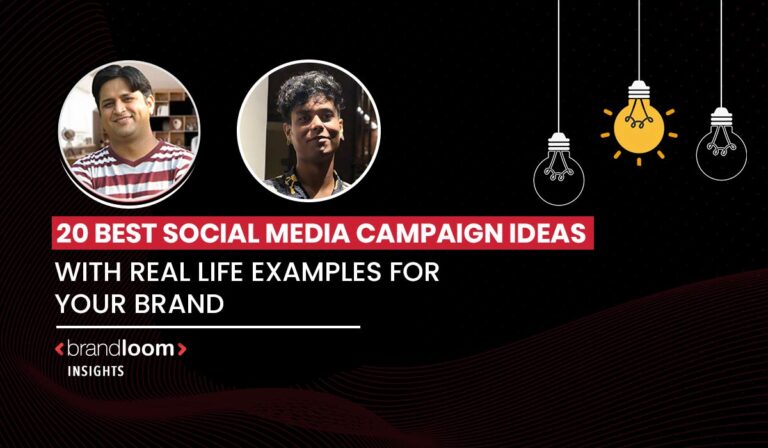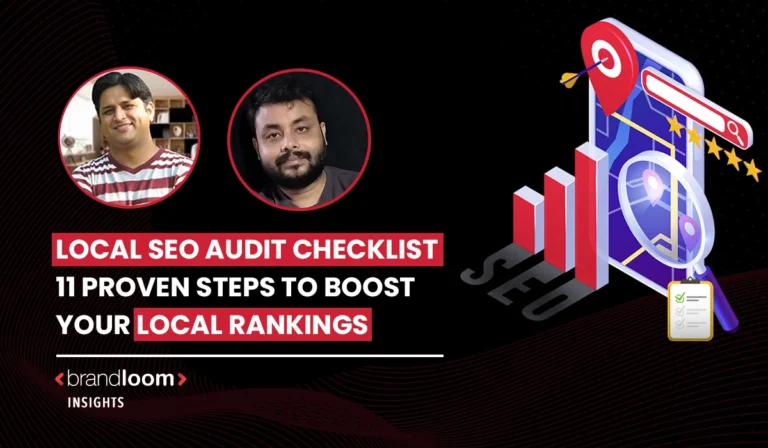Standing out on social media is more complex than ever. Millions of posts, photos, and videos flood feeds every second, competing for attention. So, how do you make sure your brand gets noticed? The answer is to make a social media campaign that does more than just look good. It needs to connect people, inspire them, and get them to act.
A successful social media campaign isn’t just about going viral. It all comes down to creating something that resonates with people. This should spark conversation and leave a lasting impression. The best ads tell a story and evoke emotions. It establishes a brand’s voice in a way that is genuine and memorable.
We’re going to show you some amazing social media marketing ideas that have raised the bar in this blog. People were really interested in these real-life cases, which ranged from small businesses to global giants. Use these ads to attract more followers to your business on social media. Whether you are a marketer, creator, or strategist this can be helpful.
Looking to create impact like these? BrandLoom can help you craft campaigns that connect, convert, and grow. Ready to dive in? Let’s get started!
Social Media Campaign Ideas
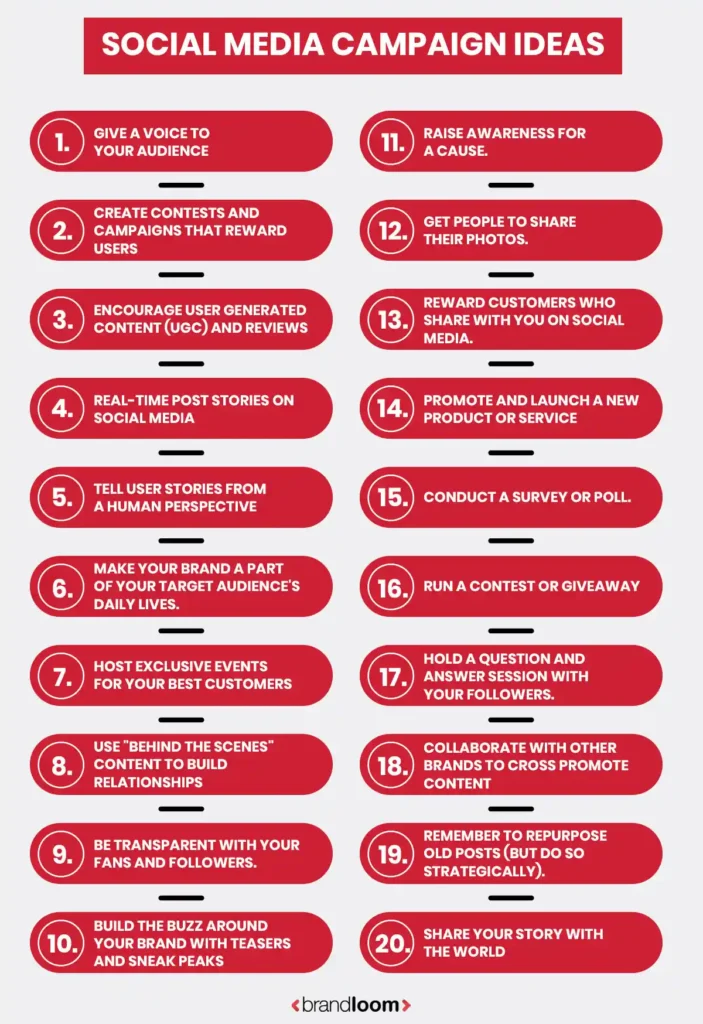
These social media campaign ideas show how brands connect with their audiences. This includes both the latest trends and powerful storytelling. They also highlight the value of user-generated content in creating authentic engagement. Each campaign offers a unique way to build meaningful and lasting connections. Get ready to explore the creativity behind top social media campaigns. We’ll also dive into the strategies that made them successful.
1. Give a Voice to your Audience in your Social Media Campaigns
Getting the audience to participate is a great way to capture their interest. That being said, you can also use it to make material that can be used in other situations. For example, you can use what people say about your goods and services on social media.
This will help you plan your next ad campaign. They are more likely to keep reading your content. This includes registration emails if you let your audience have a say in it.
Starbucks’ #MyStarbucksIdea campaign invited customers to share their suggestions. These included changes to products and customer service improvements. They also introduced eco-friendly ideas.
The campaign gave customers a voice in the company. It also generated valuable content. This helped improve Starbucks’ brand and offerings.
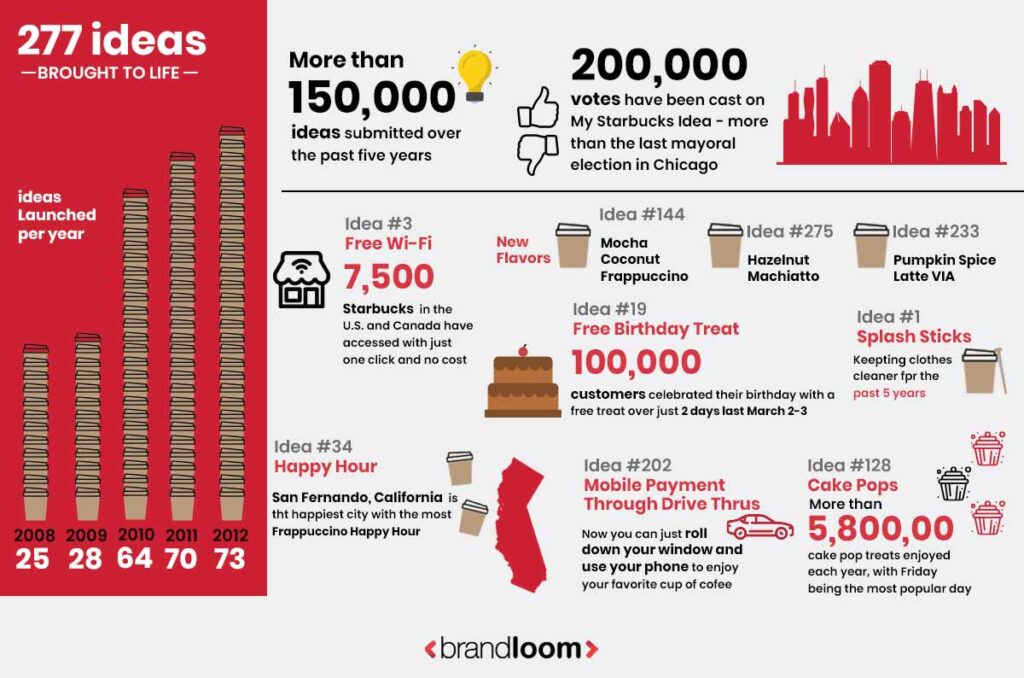
2. Create Contests and Campaigns that Reward Users in your Social Media Campaigns
Contests and campaigns that give people prizes are a good way to get people. This help connect with your brand. Give them something useful. But also make it fun and interesting. So, they’ll want to share it with their friends. The prize should have something to do with your business or goods.
Different kinds of competitions include:
- Photo Contests: Participants submit a photo related to your brand or product.
- Hashtag Contests: Users post content with a specific hashtag.
- Comment to Win: Participants enter by commenting on a post.
- Tag a Friend: Users enter by tagging friends in the comments.
- Vote to Win: Participants submit entries, and the community votes on their favorite.
When the contest ends, don’t wait to announce the winners. They should be informed right away. If you want more openness, have them share their entries and discuss how they won.
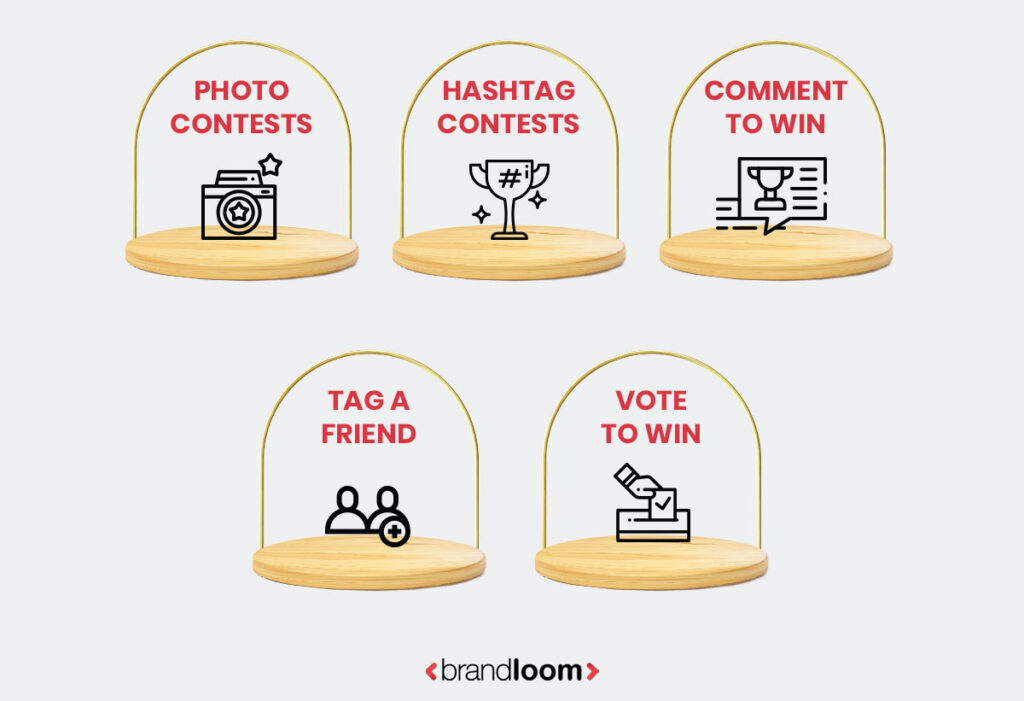
For example, GoPro hosts contests where users can showcase their best work with the company’s cameras. Participants can win GoPro gear. They can share their videos on the company’s channels. This campaign rewards users. It generates a steady stream of user-generated content for the brand.
3. Encourage User Generated Content (UGC) and Reviews in your Social Media Campaigns
User-generated content (UGC) is a fantastic avenue for product demonstration. It can be used to boost participation and revenue. You can include user-generated content in your social media campaigns. Ask your target audience to submit their own content. They could receive discounts or free items to create social media content.
In addition to UGC, seek customer reviews on Google My Business, Yelp, and Trustpilot. Customers’ confidence in a company can be increased by the positive feedback. They read online in the form of reviews.
You can incentivize customers to leave reviews. One can offer them discount on their next purchase or a chance to win a prize in exchange for feedback. For instance, after a customer makes a purchase, the online store can send a thank-you email. It can include a promo code for a future purchase if the customer leaves a review.
4. Real-Time Post Stories on Social Media in your Social Media Campaigns
It works really well to use social media to connect with your ideal customers and advertise your company, goods, and services. Social media can also be used to share material that is aimed at customers. For instance, tips on how to use the product or service.
This will not only help your target market, but will also make your company a thought leader. A fitness company could use Instagram Stories. For example, one can show off exercises. A cooking app can use Facebook Stories to show off easy meals.
You can use narratives to explain the humanity behind your brand. There could be report on events in real-time, tease upcoming releases, or feature customer praise.
Snapchat is an excellent way for a tech company to give a live tour. One can introduce their office and team members. At the same time, Instagram stories is perfect for a beauty brand. One can share a makeup tutorial using various products.
5. Tell User Stories from a Human Perspective in your Social Media Campaigns
Use first-person narrative to relate your user experience tales. Look past the actual product. Appreciate the people who made it possible. They should not be treated as a digit in your accounting records.
Provide concrete examples of how your product has helped real people. Connecting with people who have had similar experiences would be more effective than saying, “Our product is great,” or “This feature makes me happy.”
If you have a fitness app, for example, don’t just talk about how great it is. Talk about how it helped one user meet their fitness goals. Think about the problems they were facing and the results they wanted. Show how your product helped them achieve those goals. Your product’s value is showcased here. Potential customers who face similar issues will likely relate to it.
The “Stories from the Airbnb Community” part is a great example. It emphasizes the relationships and shared experiences that occur when people use it.
6. Make your brand a part of your target audience’s daily lives in your Social Media Campaigns
Achieving seamless integration of your brand into the daily lives of your target audience is crucial. This helps build a lasting and meaningful connection. Various strategies can achieve this integration. This helps ensure your brand becomes a consistent and integral part of their routines.
For example, a fitness app could improve the daily life of a person. Such apps can send personalized workout reminders or motivational messages at optimal times. It could be early in the morning or immediately after work. This helps establish a routine. It positions the brand as a supportive companion.
Freelancers, students, and remote workers often use coffee shops with free Wi-Fi as workspaces. These places also serve as social hubs for many. These coffee shops integrate into their customers’ daily lives. This is done by offering good places to work and study. These efforts encourage stability and loyalty.
7. Host Exclusive Events for Your Best Customers in your Social Media Marketing Campaigns
Hosting private events for your most devoted customers is a great strategy. This can help increase customer loyalty. It is an opportunity to express appreciation and gratitude. You do this by giving the recipient something exceptional. The most important thing is to ensure that only those participating have access. Otherwise, it will become too commercialized.
If you host these exclusive get-togethers, you build stronger connections. They help strengthen your relationship with your most valuable customers. You will also create an atmosphere where they feel valued.
8. Use “Behind the Scenes” Content to Build Relationships in your Social Media Marketing Campaigns
Behind-the-scenes content is a great way to build relationships with your audience. It can show what it is like to work at your company or what it’s like to be part of an organization. You can also use behind-the-scenes content. This will help community members share their experiences.
For example, a cosmetic company could use Instagram Stories. One can share manufacturing facility, demonstrating the care and precision that go into creating its products. They could also feature employee interviews. One can share their favorite aspects of working at the company and their favorite products. This provides transparency about the product creation process. It puts a human face to the brand and makes it more relatable and trustworthy.
9. Be Transparent with Your Fans and Followers in your Social Media Campaigns
Transparency builds trust. This fosters deeper connections. When brands are honest and open, they signal their audience that they value their concerns and input. On the other hand, a lack of transparency can lead to disinterest or disengagement. Audiences may feel disconnected or even skeptical about a brand’s authenticity.
The benefits of honesty go far beyond just maintaining a good relationship. When customers see a brand being honest about challenges or mistakes, they’re more likely to trust it. This trust can lead to loyalty and even brand advocacy. Transparency demonstrates accountability and reinforces your commitment to customer satisfaction.
For example, in 2018, KFC in the UK faced a crisis when a supply chain issue left many of their restaurants without chicken, a disaster for a chicken-focused brand! Rather than sidestepping the problem or offering a generic apology, KFC turned to transparency and humor to address the situation. KFC issued a full-page apology in newspapers, accompanied by an image of a chicken bucket labeled “FCK” (a clever rearrangement of their logo) and a message taking full responsibility for the blunder. They explained the issue openly and assured customers they were working to resolve it. The campaign turned a potential PR disaster into a masterclass in brand transparency. Fans appreciated the brand’s honesty, humor, and accountability.
10. Build the Buzz around Your Brand with Teasers and Sneak Peaks in your Social Media Campaigns
Teasers and sneak peeks are excellent ways to generate interest in your business.
Teasers are short videos that hint at what’s coming. Sneak peeks show how your product will look in its final form. Both strategies can be used for various purposes. Teasers can build excitement around upcoming events or products. Sneak peeks let you showcase your new design before it’s officially released.
These strategies serve multiple purposes. Companies like BrandLoom can be of great help if you need guidance with content strategy. Teasers are perfect for building anticipation. Use them to create buzz around product launches, events, or major announcements.
This creates a sense of excitement and curiosity. For example, before the launch of the iPhone X, Apple shared cryptic visuals and slogans, such as “Say hello to the future,” sparking massive speculation about its design and features.
11. Raise awareness for a cause in your Social Media Marketing Campaigns
Utilizing social media to raise awareness about a worthy cause is a powerful tool. You can spread the word about your initiative and encourage supporters. They can share it with others who may be interested.
To get things rolling, tag your initial posts with a relevant hashtag. Also, remember the importance of visuals. More users are engaged with posts that include images rather than just text. This is because images are more accessible to consume quickly and are more memorable than plain text. Think about colorful backgrounds.
The first step is to develop a catchy hashtag that represents your movement. This unifies all related posts. It becomes easy for interested individuals to follow the conversation. They can also contribute to it more easily.
For example, the #IceBucketChallenge became a viral sensation. It raised awareness and funds for ALS research.
Recently, the #IceBucketChallenge was one of the most viral and impactful social media campaigns. This helped raise awareness and funds for ALS (Amyotrophic Lateral Sclerosis). The challenge began mid-2014, initially as a general campaign unrelated to ALS. Participants would pour a bucket of ice water over their heads. They would post the video online and challenge others to do the same.
The ALS connection was made by Pete Frates. He was a former college baseball player diagnosed with ALS in 2012. Frates and his family played a key role in the challenge. They helped connect it to ALS awareness and fundraising.
The campaign gained massive traction. Millions of people worldwide participated. This included high-profile celebrities, athletes, and tech giants.
The Ice Bucket Challenge raised over $220 million worldwide. The ALS Association in the U.S. received $115 million. Such social media campaign ideas are very popular.
12. Get people to share their photos in your Social Media Marketing Campaigns
A good photo can make an impression on a person. It will help them remember you. If you want people to share their photos with their friends, try these ideas. Ask them which photo from the campaign is their favorite and why. Ask them if there are any other brands they’d like to see in the campaign. Also, find out if there are products or services they’d like advertised on social media.
13. Reward customers who share with you on social media
Customers who spread a message should be rewarded. Offer a discount, a free product, or a complimentary service. Consider customers’ preferences when designing the tip, making it easier to redeem (like Apple does).
For example, Starbucks has a rewards program. The program offers free coffee every month to people who share their posts on social media. It is called “The Venti Offer.” To enter, you must follow @StarbucksUK on Twitter or Instagram. Tag three friends who do not already follow either of those channels.
14. Promote and launch a new product or service in your Social Media Campaigns
Launching a new product or service from your company can be promoted via social media. If you release a new line of smartphones, use Twitter and Instagram to promote it. Share pictures of the devices while they’re being tested.
Alternatively, if you are opening an online store, you can promote the grand opening by showcasing some of your wares on social media and other sites.
Suppose your company is releasing a new line of smartphones. In that case, you can use social media platforms like Twitter and Instagram. Share pictures and videos of the phones being tested in the lab. This gives consumers a sneak peek at the product development process. It will draw attention and demonstrate your product’s craftsmanship.
15. Conduct a survey or poll in your Social Media Campaigns
When searching for social media campaign ideas, it is essential to identify your target audience.
Once you’ve defined your target audience, it’s time to consider how to approach them. The most effective way is conducting an online survey or poll.
If there’s something people love doing more than anything else (like browsing through photos), then why not ask them? There are many opportunities for brands like yours to engage with customers. These moments also help customers feel heard and valued.
Here are some suggestions for how you better engage and compensate users who take part in these surveys:
A prize would be a great incentive. Tips can attract people who haven’t heard of such surveys by highlighting the rewards of participating. Offering discounts based on the top-voted option ensures everyone benefits. Even those who voted for third place still get something.
16. Run a contest or giveaway in your Social Media Campaigns
Running a contest or giveaway can be a great way to engage with your audience. It’s also an excellent approach to raising brand recognition, creating leads, and increasing revenue if you’re lucky.
Offer something in exchange for their participation. For example, if someone wants a new smartphone but doesn’t have one yet (or wants an additional one), give them one! You can improve engagement by offering a highly appealing reward. This encourages participants to share it on social media like Facebook and Twitter.
17. Hold a question-and-answer session with your followers.
Invite your followers to ask you questions. Ask them a question, and then wait for them to respond with their answer. For instance, “How would you recommend I introduce myself to someone already familiar with me?” Use the responses to generate content for your blog or social media accounts. Such social media campaign ideas will help your audience learn more about you.
You could, for instance, kick off the conversation by asking your followers a question like, “What is the best way to introduce yourself to someone you already know?” or “What characteristics do you hope to find in the upcoming version of our product?” Get them talking by acknowledging and engaging with what they say when they do.

18. Remember to repurpose old posts (but do so strategically).
You can recycle your previous messages into a brand-new campaign. The trick is to repurpose them methodically and gradually to avoid overusing them.
For instance, if you’ve been discussing the same product on Facebook for three months, it’s time for a change. Create a new post with the same message but use different visuals or content.
You can also use Pablo or Canva, both free, in conjunction with Buffer, which costs $10 per month. If you need something quickly but effectively, these tools are helpful. Pablo lets users create graphics in minutes. They can use photos or images from social media platforms like Instagram and Twitter.
19. Collaborate with other brands to cross-promote content
Collaborations with other brands are a great way to increase your reach and exposure on social media. Collaborating with other brands that share your vision and audience can boost each other’s visibility. This will help improve reach without hurting your respective fan bases.
Find partners that are a good fit for your brand but are in a different place in their marketing funnel. For instance, an established brand could team up with a newer one. This will give the latter a place to show off its wares.
Participate in group activities, such as influencer summits, giveaways, and webinars hosted by multiple companies. Both brands can benefit from the exposure at these events. They also gain value from the personal connections made there. This would lead to new collaborations and partnerships.
20. Share your story with the world
Social media is a beautiful medium for communicating your brand’s story. You can share stories from your customers, employees, and products. Use their social media experiences to bring these stories to life. You can also provide anecdotes about how you treat coworkers. You can also discuss what it’s like to be part of the corporate culture.
People will want to learn more about your excellent product or service! This is especially true if they’ve read positive web reviews. These reviews can give them the confidence to buy from you.
Here are some of the most trendy social media campaign ideas.
By sharing these stories, you humanize your brand, making it more relatable and trustworthy. For instance, you could post customer testimonials that showcase the impact of your product. You can also share behind-the-scenes glimpses of your team. These stories provide transparency and build a narrative your audience can connect with.
Conclusion: Best Social Media Campaign Ideas
The best ideas for a social media campaign don’t always have to be completely new. Sometimes, it’s more about giving something you already have a new look. Content that you already have can be shown in new ways on different platforms.
For example, don’t just post on Facebook that people love your goods if they do. Also, tell them to share it again on Pinterest or Instagram. This multi-platform strategy enables you to reach a broader audience. It also increases your business’s visibility.
At BrandLoom, we strategically repurpose every piece of your content to ensure it reaches the right audience, on the right platform, at the right time. We turn long-form blogs into bite-sized social posts, videos into reels, and webinars into carousels. This way, your content works harder and reaches a wider audience.
Our goal is to help you stay consistent, relevant, and visible across all touchpoints without having to create from scratch constantly. With BrandLoom, your content becomes a growth engine that drives engagement, boosts brand recall, and maximizes ROI, again and again.
Ready to win on Social Media? Let BrandLoom repurpose your content to unlock maximum reach, engagement, and impact.
FAQs
The 5-5-5 rule is a content strategy framework that helps ensure variety and balance. It suggests posting:
– 5 pieces of content about your brand or product.
– Pieces of curated content from other sources.
– 5 pieces of engagement content (questions, polls, memes, etc.).
This approach keeps your feed diverse and avoids overly promotional messaging.
A successful social media campaign requires:
– Clear goals (e.g., engagement, leads, conversions).
– Target audience research.
– Compelling creatives and copy.
– A content calendar.
– Platform-specific strategies.
– Analytics and optimization throughout.
Partnering with a digital marketing company in Gurgaon, like BrandLoom, can help streamline all these steps for better results
This classic marketing rule breaks down your campaign success as follows:
– 40% depends on your target audience.
– 40% depends on your offer or content.
– 20% depends on your execution and visuals.
It emphasizes the importance of knowing your audience. This also highlights the need to offer clear value to them.
The 5-3-1 rule helps increase organic engagement on Instagram:
– Like 5 posts.
– Comment on 3 posts.
– Follow 1 account daily.
It’s often used for community building and networking within your niche.
To write an effective social media plan:
– Define your goals (brand awareness, sales, leads).
– Identify your target audience.
– Select the right platforms.
– Plan content pillars and themes.
– Create a content calendar.
– Define KPIs and tracking metrics.
A digital marketing agency in Gurgaon can help you create a custom plan. This plan will be tailored to your specific business goals.
Yes, ChatGPT, Canva, and Copy.ai are examples of AI tools that can make comments, images, and even whole content calendars. Human creativity and planning are still essential. They help maintain a consistent tone, build connection, and keep the brand aligned.
– SMO (Social Media Optimization) involves improving your profiles, content structure, and organic reach.
– SMM (Social Media Marketing) includes paid advertising, audience targeting, and campaign management.
A successful social media campaign is one that achieves its defined objectives while creating a strong connection with the target audience. It begins with clear goals, whether it’s brand awareness, engagement, lead generation, or sales.
From there, the campaign must deliver compelling content that resonates with the audience, paired with strong visuals, strategic messaging, and a consistent brand voice. Success also depends on how well the campaign is timed, targeted, and optimized across channels.
Engagement plays a big role, campaigns that invite conversation, feedback, or participation tend to perform better. Finally, ongoing analysis and the ability to adapt content or strategy based on performance data ensure that the campaign stays effective throughout its duration.
Measuring ROI for a social media campaign involves evaluating the return you gain, whether financial or strategic, against the resources invested. This means tracking conversions, sales, or leads generated from the campaign using tools like Google Analytics, social media insights, or UTM-tagged URLs.
In cases where the campaign goal is awareness or engagement, ROI might be reflected in increased follower count, website visits, or improved brand sentiment. While financial returns are easier to calculate for paid campaigns, organic efforts may deliver long-term value through audience loyalty and brand recognition. Ultimately, ROI is meaningful when it aligns with the original goals set at the beginning of the campaign.
Platform-specific content is essential for any social media campaign to succeed. Each platform caters to different user behaviors, content formats, and engagement styles.
For example, Instagram users engage more with visual content like Reels and Stories, while LinkedIn users prefer informative posts and professional insights. When content is tailored to the strengths and norms of each platform, it not only performs better algorithmically but also feels more natural and relevant to the audience.
Campaigns that ignore these differences risk delivering messages that feel out of place or ineffective. Therefore, thoughtful planning that adapts the creative and tone of content for each platform greatly enhances campaign performance.
Both video and static content play important roles in social media marketing, but video has gained a clear edge in recent years. Video content is often more engaging, holds attention longer, and is favored by most platform algorithms.
It allows brands to tell stories, showcase products in action, and create emotional connections with viewers. However, static content, like carousels, infographics, and branded graphics, still holds value, especially for delivering quick information or maintaining visual consistency.
Ideally, brands should adopt a balanced approach, using video to capture interest and drive deeper engagement, while leveraging static posts to reinforce messaging, provide clarity, and maintain a cohesive brand identity.
Timing is a critical factor in the success of a social media campaign. Launching content when your target audience is most active ensures better visibility and engagement.
It also aligns your campaign with relevant moments, like festivals, product launches, sales seasons, or trending topics, which can amplify reach and relevance. Additionally, timing affects how competitive your message is in a crowded feed.
Posting during peak hours on each platform or scheduling campaigns to coincide with broader marketing efforts can make a significant difference. Poorly timed campaigns, on the other hand, risk being overlooked, regardless of the quality of the content. That’s why analyzing audience behavior and seasonal trends is essential during campaign planning.

